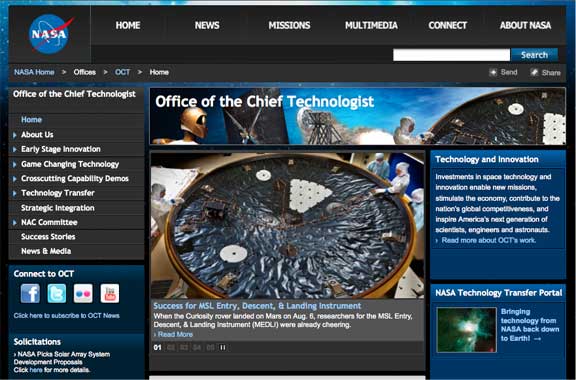...for small spacecraft in the areas of communications, formation flying and docking systems. The cutting-edge space technology flights are expected to take place in 2014 and 2015. All selected missions will employ nanosatellites conforming to the CubeSat standard. CubeSats are composed of four-inch, cube-shaped units with each having a volume of about one quart and a weight of approximately three pounds. CubeSats can be joined to create multiple-unit spacecraft. They readily can be accommodated as secondary payloads or rideshares on a number of space launch vehicles. The three missions selected for flight demonstration are:
-
—"Integrated Solar Array and Reflectarray Antenna (ISARA) for High Bandwidth CubeSat," Richard Hodges, NASA Jet Propulsion Laboratory, Pasadena, California, partnering with Pumpkin Inc. of San Francisco. ISARA will demonstrate a radio communication system that dramatically boosts the amount of data that the small satellite can transmit by using the back of its solar array as a reflector for the antenna. This three-unit CubeSat will be funded at approximately $5.5 million with launch expected in two years.
—"Integrated Optical Communications and Proximity Sensors for Cubesats," Siegfried Janson, Aerospace Corporation of El Segundo, California. This pair of 1.5-unit CubeSats will demonstrate a laser communication system for sending large amounts of information from a satellite to Earth and also demonstrate low-cost radar and optical sensors for helping small spacecraft maneuver near each other. The mission is expected to take two years and $3.6 million to develop and operate.
—"Proximity Operations Nano-Satellite Flight Demonstration," Charles MacGillivray, Tyvak Nano-Satellite Systems LLC of Orange, California. Two three-unit CubeSats will demonstrate rendezvous and mechanical docking of small spacecraft in orbit. This project is expected to take three years and approximately $13.5 million in funding to develop, launch and operate. Partners on the project include Applied Defense Solutions Inc. of Columbia, Maryland, 406 Aerospace LLC of Bozeman, Montana, and California Polytechnic State University of San Luis Obispo.
NASA's Small Spacecraft Technology Program is designed to identify and support the development of new subsystem technologies to enhance or expand the capabilities of small spacecraft. The program also supports flight demonstrations of new small spacecraft technologies, capabilities and applications. In addition, it supports use of small spacecraft as platforms to test and demonstrate technologies and capabilities that might have applications in spacecraft and systems of any size.
NASA's Space Technology Program directs the Small Spacecraft Technology Program, which is managed by NASA's Ames Research Center in Moffett Field, California. NASA's Space Technology Program is innovating, developing, testing and flying hardware for use in NASA's future science and exploration missions. NASA's technology investments provide cutting-edge solutions for our nation's future.


